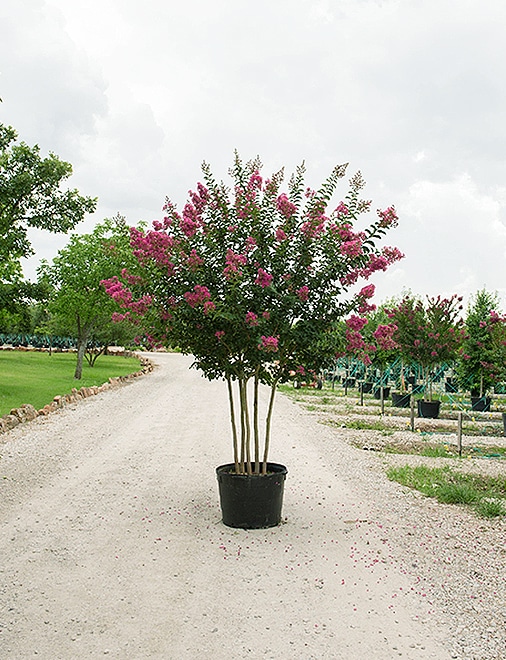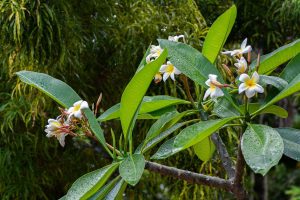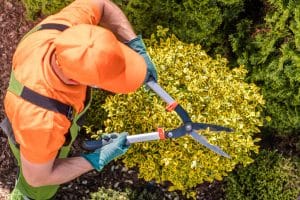Welcome to our detailed guide to the stunning Tuscarora Crape Myrtle, created specifically for Houston Heights Tree Service. In this post, we will go on a tour to discover the appeal and cultivation of these magnificent trees. Tuscarora Crape Myrtle is a beacon of beauty in arboriculture, with its beautiful blossoms and sturdy nature.
With insights geared toward both tree service professionals and hobbyists, we hope to unlock the secrets of Tuscarora Crape Myrtle, providing practical information and expert suggestions for growing these botanical marvels. Join us as we explore the beauty of Tuscarora Crape Myrtle and improve the landscape of Houston Heights Tree Service.
Tuscarora crape myrtle
Exploring the Beauty of Tuscarora Crape Myrtle
Tuscarora Crape Myrtle noted for its amazing beauty, captivates with vivid blooms and elegant foliage. This gorgeous tree is a popular addition to Houston Heights Tree Service’s gardens, with enormous clusters of vibrant pink blooms that cover its branches in the summer. The brilliant blossoms, set against a backdrop of glossy green foliage, create a spectacle that captivates those who witness it.

Beyond its remarkable beauty, Tuscarora Crape Myrtle provides visual appeal throughout the year. In autumn, its foliage turns deep orange and red, providing warmth and depth to the environment. Even in the winter, the tree’s graceful profile adds structure and charm to the environment.
Tuscarora Crape Myrtle demonstrates its resistance to heat, drought, and pests, making it a low-maintenance yet high-impact landscape plant. Whether planted as a focal point, in borders, or bulk plantings, this stately tree never fails to leave an indelible impression with its unparalleled beauty and charm.
Cultivation and Planting Tips
Tuscarora Crape Myrtle cultivation begins with choosing the right place and caring for it properly. When selecting a planting area, choose one that receives at least six hours of direct sunlight per day. This will ensure optimal growth and plentiful flowers.
Before planting, treat the soil with organic matter to promote drainage and fertility. Tuscarora Crape Myrtle prefers well-drained soil that has a somewhat acidic pH.

When planting, make a hole twice as wide and just as deep as the root ball. Before inserting the tree in the hole, gently loosen the roots and make sure the root flare is level with the soil surface. Backfill the hole with dirt, gently firming it around the roots to remove air pockets. Water the newly planted tree thoroughly and spread a layer of mulch around the base to conserve moisture and control weeds. Water regularly during the first growing season to help build a robust root system.
Following these planting guidelines will guarantee that Tuscarora Crape Myrtle establishes and grows well in your Houston Heights Tree Service landscaping.
Care and Maintenance
Tuscarora Crape Myrtle in your landscaping, handled by Houston Heights Tree Service, needs proper care and upkeep to be healthy and active. Here are some important practices to follow:
Watering: Water the soil regularly, particularly during dry months, to maintain it evenly moist but not saturated. Deep, infrequent watering promotes deep root growth and allows the tree to resist drought conditions.
Fertilization: Apply a balanced fertilizer designed for flowering trees in early spring to promote healthy development and numerous blooms. Follow the manufacturer’s directions for application rates and timing.
Pruning: Tuscarora Crape Myrtle should be pruned in late winter or early spring to remove dead or diseased branches and keep its shape balanced. Avoid excessive pruning, since it might restrict flowering and cause weak growth.
Related Posts:
Troubleshooting Common Issues
Despite its tenacity, Tuscarora Crape Myrtle may experience some problems that require maintenance. Here are some frequent difficulties and solutions:
Pest Infestations: Look for typical pests, including aphids, scale insects, and powdery mildew. Infestations should be treated as soon as possible with insecticidal soap or horticultural oil, paying close attention to product directions.
Disease: Look for symptoms of fungal infections such as powdery mildew, Cercospora leaf spot, and sooty mold. Improve air circulation around the tree by trimming and thinning branches as necessary. Apply fungicides as needed, following the specified guidelines.
Nutrient Deficiencies: Yellowing leaves can indicate a nutritional deficiency, such as nitrogen or iron. Conduct a soil test to discover inadequacies, and then amend the soil with the required fertilizers or additions.
Overwatering: causes yellowing foliage, root rot, and wilting. Allow the soil to dry between waterings and ensure enough drainage to avoid soggy situations.
By correcting these frequent issues as soon as possible, you can ensure the continuing health and vigor of your Houston Heights Tree Service landscape’s Tuscarora Crape Myrtle.
FAQS
How tall will the Tuscarora Crape Myrtle grow?
Tuscarora Crape Myrtle grows to be 15 to 20 feet tall, making it ideal for small to medium-sized landscapes.
When should I prune Tuscarora Crape Myrtle?
Tuscarora Crape Myrtle should be pruned in late winter or early spring before new growth begins to promote copious flowering and keep it looking neat.
Does Tuscarora Crape Myrtle need full sun?
Yes, Tuscarora Crape Myrtle prefers full sun exposure, with at least six hours of direct sunshine every day for best flowering and growth.
How often should I water my Tuscarora Crape Myrtle?
Water Tuscarora Crape Myrtle deeply and sparingly, keeping the soil equally moist but not waterlogged, especially during hot, dry spells.
Is the Tuscarora Crape Myrtle resistant to pests and diseases?
While generally resistant, Tuscarora Crape Myrtle is vulnerable to aphids, powdery mildew, and other common pests and diseases. Regular inspections and good upkeep can assist in alleviating these difficulties.
Conclusion
Finally, Tuscarora Crape Myrtle is a monument to natural beauty and durability, making it an excellent addition to Houston Heights Tree Service’s landscapes. This enormous tree captivates the senses and adds unrivalled charm to outdoor settings with its vivid blossoms, beautiful leaves, and low-maintenance nature. Following the cultivation, care, and maintenance guidelines described in this guide will ensure the continued health and vibrancy of Tuscarora Crape Myrtle in their environments. From choosing the ideal planting location to addressing frequent problems, each step contributes to these majestic trees’ long-term prosperity.



